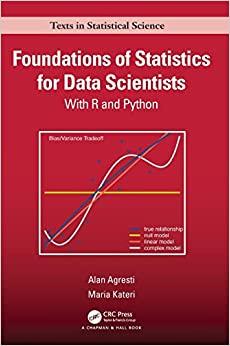The Markov inequality states thatwhen P(Y 0) = 1, then P(Y t) E(Y )~t.
Question:
The Markov inequality states thatwhen P(Y ≥ 0) = 1, then P(Y ≥ t) ≤ E(Y )~t.
(a) When Y is discreteoverthenonnegativeintegers,provethisbyexplainingwhy E(Y ) ≥
Σy≥t yf(y) ≥ Σy≥t tf(y) = tP (Y ≥ t).
(b) If X is anyrandomvariablewithmean μ and variance σ2, applytheMarkovinequality with Y = (X − μ)2 to prove Chebyshev’s inequality that P(SX − μS ≥ kσ) ≤ 1~k2.
(c) Consider k = 1 in Chebyshev’sinequality.Specifyaprobabilitydistributionforwhich P(SX − μS ≥ σ) = 1.
Fantastic news! We've Found the answer you've been seeking!
Step by Step Answer:
Related Book For 

Foundations Of Statistics For Data Scientists With R And Python
ISBN: 9780367748456
1st Edition
Authors: Alan Agresti
Question Posted:






